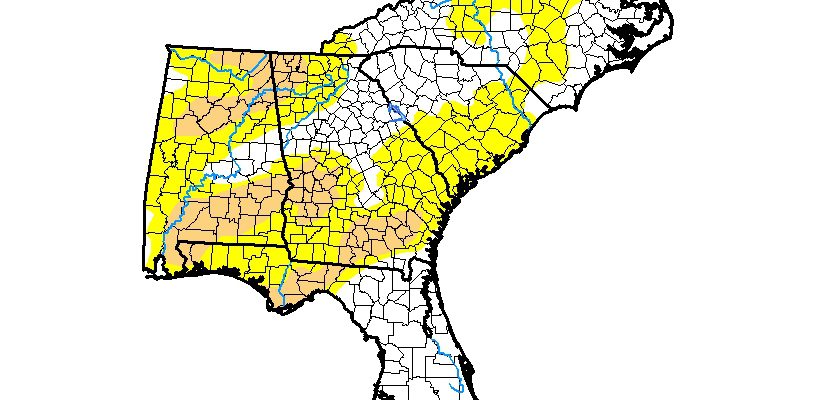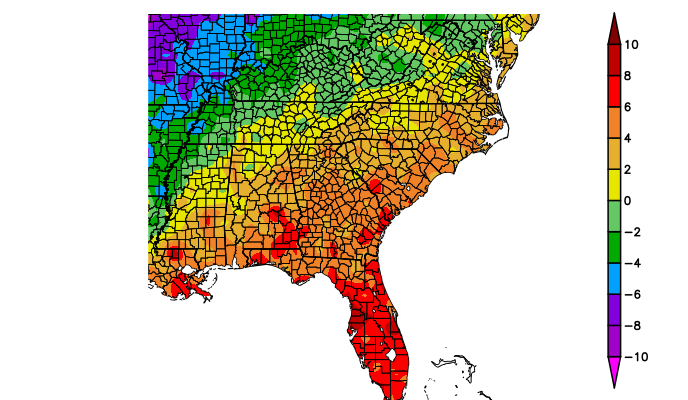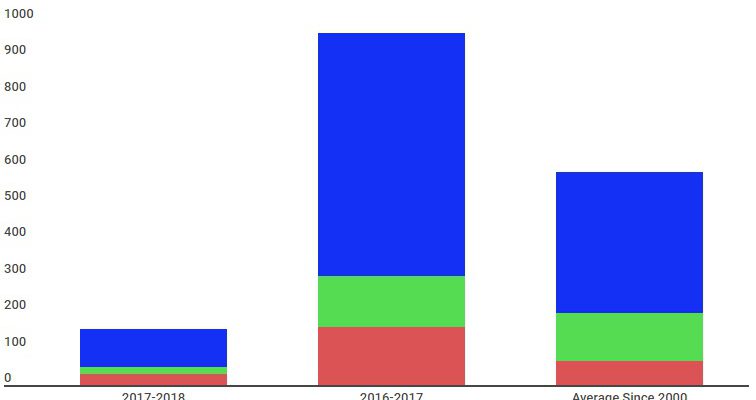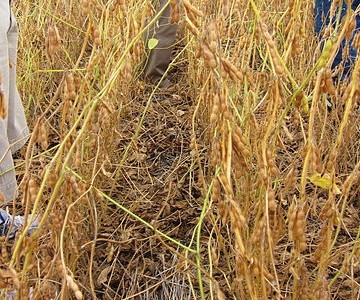-

The latest climate outlook maps for the US have been released today. They show that the La Niña pattern we have seen in the last few weeks is expected to continue, although the subtropical jet stream which brings rain to the Ohio River Valley in La Niña years is shifted a bit farther south, as…
Posted in: Climate outlooks -

After a week of significant rain, dry conditions in the Southeast have been significantly reduced, now covering just over half the region. Severe (D2) drought has been eliminated from the area. Over the short term, additional reductions in drought are likely due to additional rainfall, although warmer than normal temperatures will also increase evaporation. The…
Posted in: Drought -

The climate for the first half of February 2018 in the Southeast shows warm conditions across most of the region, especially in the southern areas. Quite a change from January! Wet conditions are apparent in the northern sections, but drier than normal conditions are present in the Florida peninsula and along the Atlantic coast. This…
-

Normally I don’t post political stories on this blog, because they make everyone mad and don’t promote either good climate science or agriculture. But as a former National Weather Service employee I was unhappy when I read an article today on Yahoo News which described the effects that the budget recently released by President Trump…
Posted in: Climate and Ag in the news -

Weather Underground published an interesting analysis of severe weather this year earlier in February. Considering how cold the East Coast has been, it’s probably not a big surprise that severe weather, which is usually linked to thunderstorms, would be limited this year. By comparison, last year there was well above-normal activity. Still, I did not…
-

According to the NASDAQ newsletter, a heat wave in Argentina has increased stress on corn and soybeans already being threatened by drought in South America. Fortunately, a wet start to the growing season has so far limited the worst consequences of the drought, but if they don’t get more rain soon, yields are going to…
-

Ten miles off the coast of Alabama, an underground cypress forest is being studied by scientists to help learn about the climate of 50,000 years ago, when the forest was alive, according to a recent story by National Public Radio. The ice-age forest may be able to provide new clues about how forests grew in…